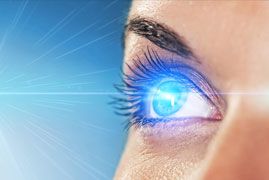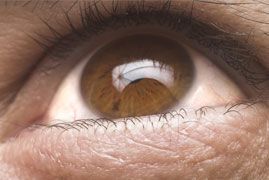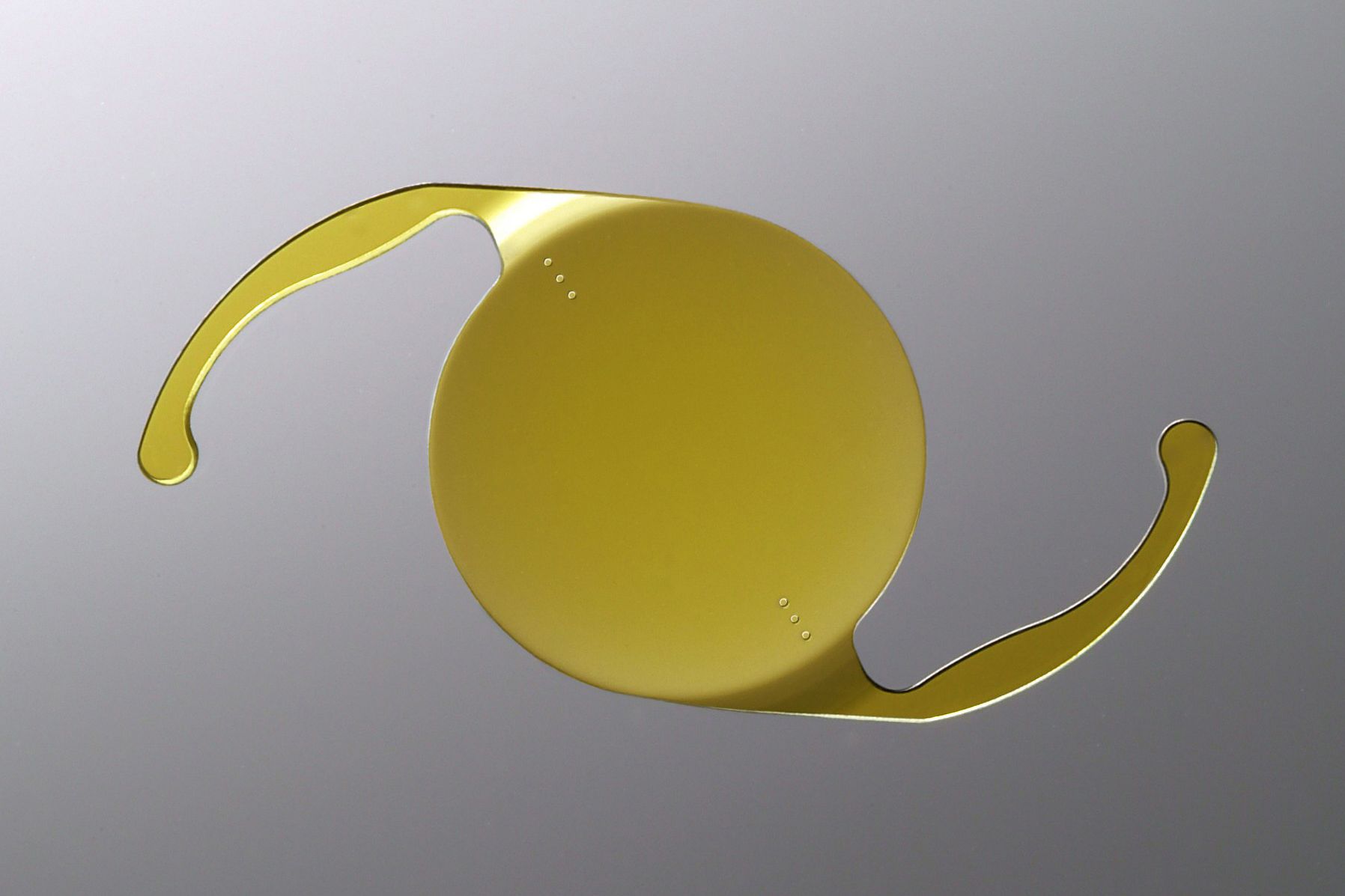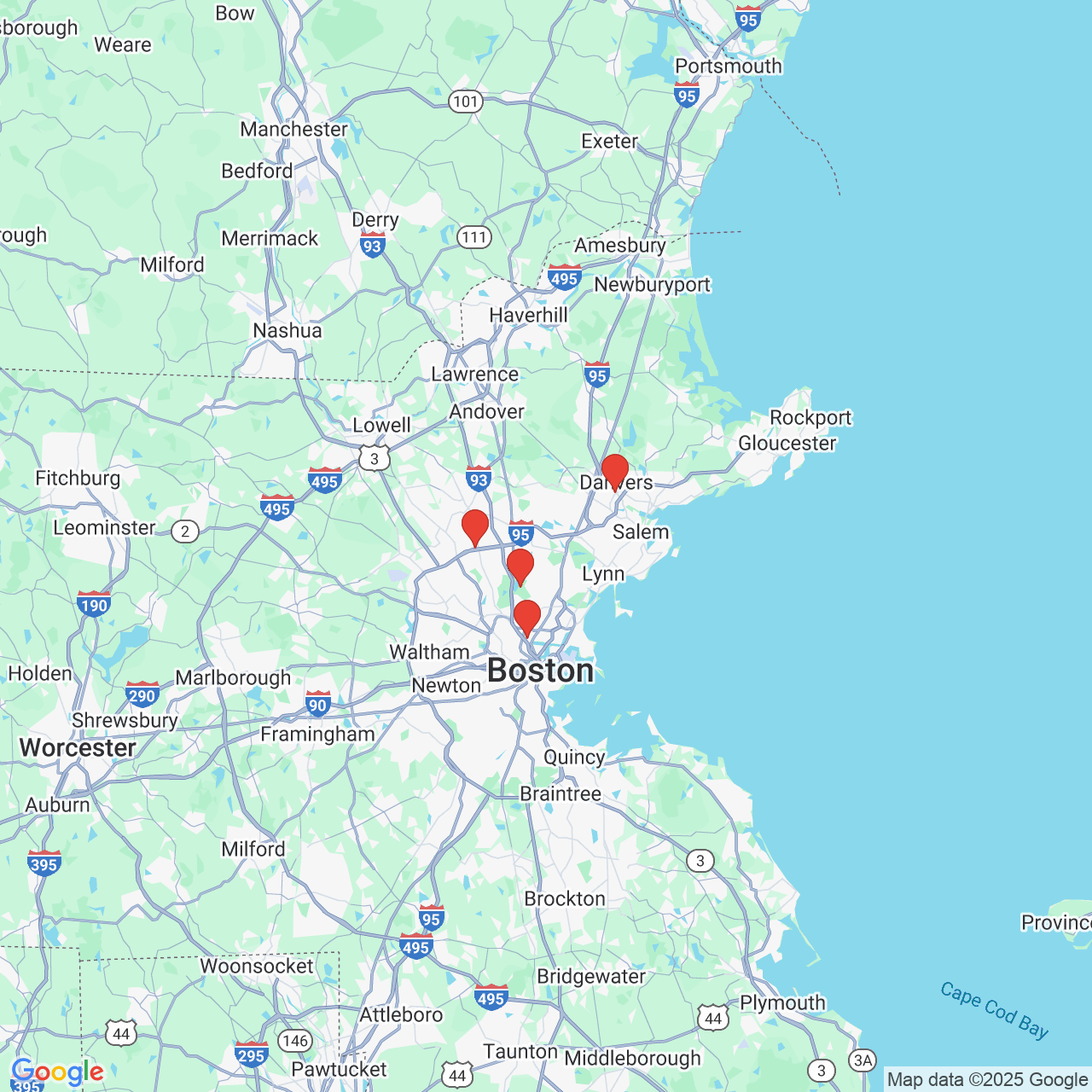Tired of Glasses and Contacts?
Have you grown weary of the hassle and expense associated with glasses and contact lenses? Safe, effective and nearly painless procedures are available to sharpen vision and do away with the need for cumbersome visual aids. At Sheth-Horsley Eye Center, our specialists perform a range of refractive surgeries to improve our patients' eyesight. If you are interested in learning more or would like to schedule an examination with Dr. Nilesh M. Sheth or Dr. Robert Kupsc, please take the time to fill out our simple online contact form.
LASIK
Laser-assisted in situ keratomileusis, or LASIK, is a type of refractive surgery used to correct farsightedness, nearsightedness and astigmatism. This simple procedure, which reshapes the cornea using a specialized laser, offers a number of benefits to patients, namely, the ability to see clearly without contact lenses and glasses.
Custom LASIK
Also known as wavefront LASIK, custom LASIK offers customized treatment using 3-D imaging to map the eye and the unique way it processes light and images. Collected information dictates how the cornea will be specifically reshaped. This type of individualized surgery allows for a very precise post surgical outcome.
Blade-free LASIK
Unlike traditional LASIK, in which the surgeon cuts a flap in the surface of the cornea using a microkeratome, or mechanical cutting tool, bladeless or blade-free LASIK incorporates a laser to create the corneal flap. Fewer complications, including improved healing time, have been reported among the benefits of this type of refractive surgery.
LASEK
Combining elements of traditional LASIK with photorefractive keratectomy (PRK), LASEK is used to correct nearsightedness, farsightedness and astigmatism by reshaping the cornea using a specialized laser. Unlike LASIK in which a flap is cut into the outer layer of the cornea, LASEK works similarly to PRK in that the epithelium (outermost layer of the cornea) is separated from the stroma (deepest layer of the cornea) but not fully removed. The tissue is then repositioned after reshaping to aid in healing.
Photorefractive Keratectomy (PRK)
Unlike LASEK, PRK completely removes the epithelium, or outermost layer of the cornea. To allow for laser reshaping of the cornea, the epithelium is essentially rubbed off using an alcohol solution and blunt surgical instrument. The cornea heals itself quickly and the tissue typically grows back within five days.
Conductive Keratoplasty (CK)
Conductive keratoplasty, or CK, is a type of non-laser refractive eye surgery. Ideal candidates are middle-aged and elderly individuals with mild farsightedness. Low energy waves are used to reshape the cornea by steepening its curvature, allowing for enhanced vision at close distances and reducing patients' dependence on reading glasses.
Implantable Collamer Lens (ICLs)
Implantable Collamer Lenses (ICLs), or phakic intraocular lenses (IOLs), are implantable contact lenses used to correct moderate to severe nearsightedness. ICLs are suitable for patients who have been deemed unfit candidates for LASIK (due to severe dry eye or thin corneas, for example) and work by reshaping the cornea using a thin plastic lens placed between the iris and cornea or behind the iris.
Refractive Lens Exchange (RLE)
Refractive lens exchange (RLE), or lens replacement surgery, is similar to cataract surgery in that an intraocular lens (IOL) replaces the eye's natural lens, but this procedure is used to treat extreme farsightedness or presbyopia (age-related condition causing blurring at close distances). RLE is a suitable alternative for patients who have been deemed unfit for procedures such as phakic IOLs, PRK or LASIK.
Intraocular Lens (IOLs)
Artificial intraocular lenses, or IOLs, are used to replace the eye's natural lens after it is removed during cataract surgery. A range of IOLs are available and advancements in the technology have produced "premium" lenses which allow for sight correction at a range of distances. Additionally, refractive lens exchange (RLE) is a great solution for patients with presbyopia or extreme farsightedness who want minimal reliance on their spectacles.
Astigmatic "Arcuate" Keratotomy & Limbal Relaxing Incisions (AK & LRIs)
Astigmatic "arcuate" keratotomy (AK) and limbal relaxing incisions (LRIs) are are used to treat astigmatism. LRIs are a type of AK that uses tiny incisions to relax tissue around the cornea, effectively reshaping its curvature into a more desirable position. LRIs are often combined with refractive surgeries, such as LASIK, to treat astigmatism while improving vision and reducing dependence on glasses and contacts.
KAMRA® Inlay
If you don't have the vision you once had, and you are tired of using reading glasses for simple tasks, consider the KAMRA® Inlay. Dr. Sheth will place the inlay, which is a mini-ring with a pinhole opening in the center, and is smaller and thinner than a contact lens, in only one of your eyes. This pinhole will allow your eye to more accurately and effectively focus light into the cornea. Your other eye will remain unaffected, and will allow your long-distance vision to remain strong.
IPL Laser for Dry Eyes
Dr. Sheth can treat your chronic dry eyes with IPL (intense pulsed light). Our eyes become dry due to their inability to produce tears because of blocked tear duct. During IPL treatment, the light energy reduces inflammation, which softens and liquefies secretions that are blocking the tear glands. IPL treatment is painless, quick, and easy. You can look forward to immediate improvements in your vision.
EDOF (extended depth of field) Implants
Dr. Sheth uses the latest ophthalmologic technology, which is why he offers EDOF (extended depth of vision) implants. These implants can dramatically reduce photic phenomena such as halos and glare. Now you can look forward to living life while depending less on your spectacles for everyday activities such as reading and cooking. Dr. Shesh is highly skilled and can place these implants with care and accuracy.
Collagen Cross-linking
In order to strengthen the cornea, Dr. Sheth can perform corneal collagen cross-linking. During a minimally invasive procedure, he will apply liquid riboflavin, or vitamin B2, to the surface of the eye, and activate it with illuminating UV-A light. Corneal collagen cross-linking strengthens the cornea by increasing the number of anchors that bond the collagen fibers together. Collagen cross-linking is most effective for patients whose corneal shape is not already significantly misshapen.
















